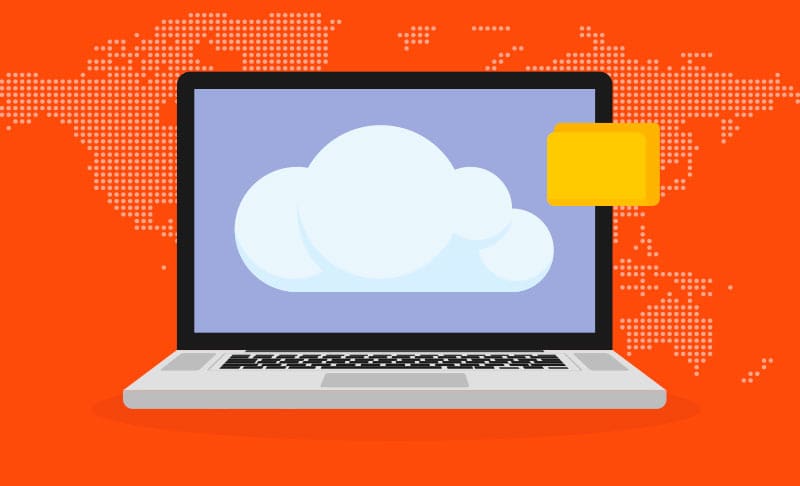How Does Cloud Storage Work?
“The cloud” is a phrase that gets thrown around a lot in the computer world. But not everyone is clear on what exactly it is or how it works. Believe it or not, even if you think you don’t know anything about the cloud, chances are you’ve already used it. Media sharing platforms like YouTube and Instagram use the cloud, and if you’ve ever been asked to share a file with someone on a site like Dropbox, then you’ve already been utilising the cloud as part of your business operations.
Cloud computing has allowed companies to save money by not needing to buy equipment needed to store and process their files. Using the power of the internet, cloud computing allows businesses to run programmes and applications to save time, hassle, space and money. But how exactly does it all work? And how crucial is it in our ever-increasing digital world?
What is the Cloud?
Simply put, the cloud is a model of computer data storage. From the name, it may sound like the data it stores is floating up above in the sky, nestled in the clouds until it is drawn down when someone tries to access it. In reality, the data is being stored on a network of servers.
These servers are located in data centres all over the world, and they’re incredibly powerful. The system allows many different people anywhere in the world to access the data at the same time, provided they have an internet connection.
Aside from the benefits of not needing to physically share data with others across devices in order to have access to the same information, the cloud also means that businesses do not need expensive machines to store all their data, as the costs of the individual servers are being spread across many users this makes it a lower-cost option for some companies.
How it Works
The inner workings of the cloud are divided into two sections, the front end and the back end. They are connected through a network, typically the internet. The front end refers to the user of the computer, such as a business, and the back end is the cloud section of the system – the computers, servers and data storage systems that make up the cloud. The front end is what you can see, and the back end is what happens behind the scenes.
Cloud services can be public or private and can also be delivered over a company’s own intranet to remain within their network. The cloud works thanks to a technology known as virtualisation. Virtualisation allows for the creation of a simulated, digital-only, virtual computer that acts as if it were a physical computer with its own hardware – a virtual machine.
Virtual machines on the same host machine are sandboxed from one another, so they don’t interact, and the files aren’t visible to other virtual machines even though they exist on the same physical machine. Even if servers go down, cloud servers are generally always online and available, typically having been backed up on multiple machines across multiple regions.
Why is Cloud Storage Important?
Cloud storage has become increasingly popular in the business world, and it’s easy to see why. Buying new servers, installing them and maintaining them is incredibly costly, so cloud storage can eliminate the need for expensive in-house systems, which can potentially save businesses thousands in the long run.
Cloud computing has become more and more important as businesses have an ever-increasing volume of data. The nature of the way employees want to work has also shifted over the years, with more and more people working from home. Cloud computing makes remote working so much easier, with employees able to access files and even edit documents at the same time as other employees from anywhere in the world.
Additionally, your files are protected and backed up should disaster strike, and your data become inaccessible from its original source.
Public vs Private vs Semi Private Cloud Storage
Private cloud storage refers to a server, data centre or distributed network being wholly dedicated to just one organisation. Whereas a public cloud is run by an external vendor and may include many servers in multiple data centres that are shared by numerous organisations; it is usually used to identify larger tech vendors such as Amazon Web Services or Azure, who are providing the services.
Semi-Private cloud is an intermediary step where aspects of the infrastructure, for example, the network, is shared. However, other parts, for example, the physical servers, are dedicated to the client.
The main difference is that private storage is optimised to provide the storage capacity and processing power needed for a business’s operations, and public cloud storage is optimised and costed for the provision of multiple simultaneous users and may not always be what is best for your organisation.
At Tristar Tech Solutions, we can provide you with secure and managed cloud solutions tailored to your requirements. Our dedicated servers and infrastructure can be tailored to your business needs; your data is completely secure, and it is stored in multiple data centres across the UK, to allow for disaster recovery. You can learn more about Cloud Storage Services by visiting viewing our Cloud Solutions page.


